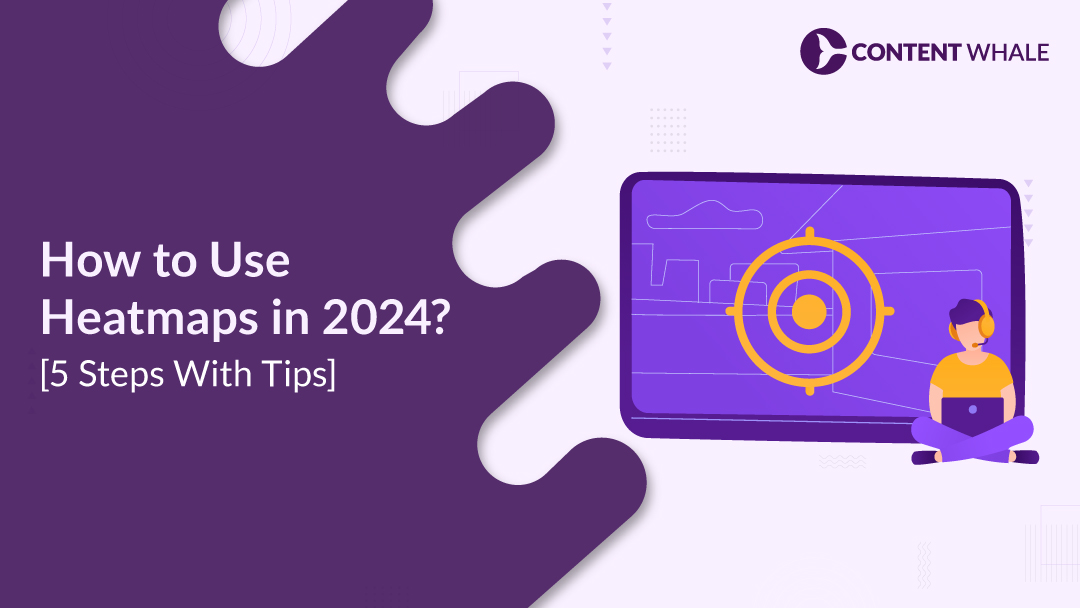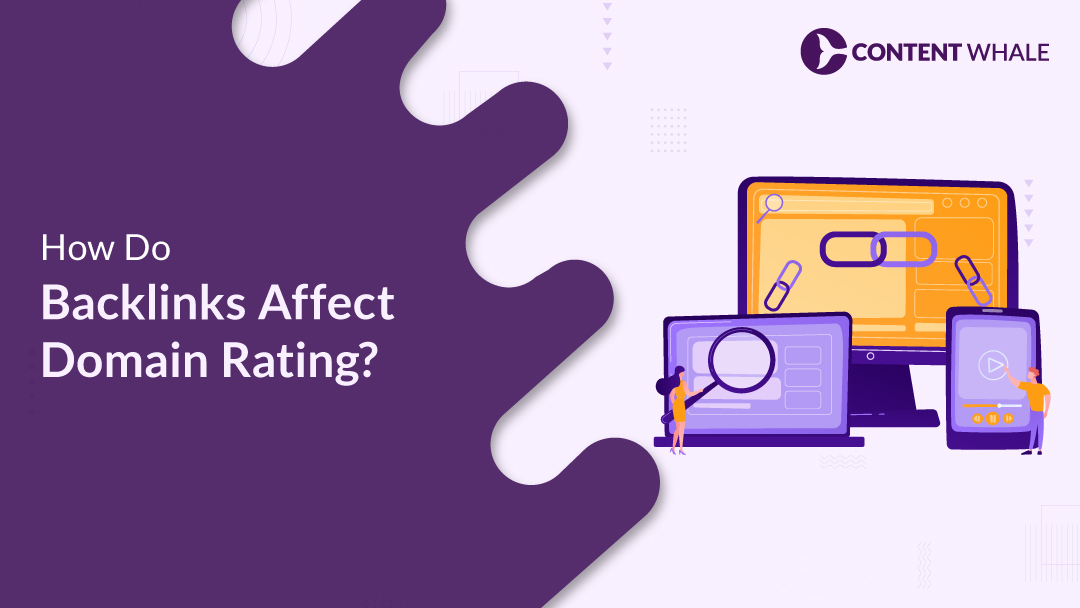Heatmaps are essential tools for understanding how users interact with your website, offering valuable insights that can significantly impact your SEO strategy. By visually representing user behavior, heatmaps show you which areas of your webpage attract the most attention, where users click, how far they scroll, and more.
These insights are invaluable for optimizing both content and design, ensuring that your site not only meets user needs but also aligns with search engine requirements.
Incorporating heatmaps into your SEO toolkit can reveal patterns that might not be immediately obvious through traditional analytics alone. They help in uncovering user preferences and behavior, guiding you to make data-driven decisions that enhance the overall user experience and improve search engine rankings.
This blog will provide practical tips on how to effectively use heatmaps for SEO, helping you to boost your website’s performance by making informed, strategic changes based on user behavior insights.
Whether you’re looking to improve engagement, optimize content placement, or enhance mobile usability, the following steps will guide you in leveraging heatmaps to their fullest potential.
What are Heatmaps in SEO?
Heatmaps are visual tools that illustrate how users interact with your website by using color gradients to indicate levels of engagement. Typically, warmer colors like red and orange represent areas of high interaction, while cooler colors like blue and green signify less engagement.
These tools are invaluable in SEO because they provide clear, actionable insights into user behavior, which can be used to optimize website design, content placement, and overall user experience.
Types of Heatmaps
- Click Heatmaps: These track where users click the most on your website, highlighting which elements, such as buttons or links, attract the most attention. This information is crucial for optimizing your call-to-action (CTA) placements and ensuring that critical links are easily accessible.
- Scroll Heatmaps: These maps show how far down a page users scroll, helping you understand whether important content is being seen or overlooked. If users are not scrolling far enough to reach key content, it might be necessary to rearrange the page layout to keep essential information above the fold.
- Mouse Movement Heatmaps: These track the movement of users’ cursors, providing insights into what parts of a page are capturing attention, even if no clicks occur. This can help identify areas of interest or confusion, allowing for targeted adjustments to improve the user journey.
- Eye-Tracking Heatmaps: Although less common due to the need for specialized equipment, eye-tracking heatmaps show exactly where users are looking on a page. This level of insight can be particularly valuable for optimizing content layout and visual elements to maximize engagement.
Relevance to SEO
Heatmaps play a crucial role in SEO by offering a deeper understanding of user behavior. They allow you to see which parts of your content are most engaging and which are being ignored.
This data can inform decisions on content optimization, user experience enhancements, and strategic content placement, all of which contribute to better search engine rankings.
By identifying and addressing user pain points or engagement barriers, heatmaps help improve the overall effectiveness of your SEO strategy, ultimately leading to higher conversion rates and improved site performance.
1. Analyze User Engagement

Heatmaps are a powerful tool for analyzing user engagement on your website, offering detailed insights into how visitors interact with different elements on a page.
By tracking clicks, scrolls, and mouse movements, heatmaps reveal which areas capture the most attention and which are ignored, helping you optimize your content for better performance.
Here’s how to use heatmap data effectively:
- Identify High-Engagement Areas: Use click maps to determine which elements, such as buttons or links, are attracting the most user attention. This data helps prioritize these elements, ensuring they are strategically placed to maximize user interaction.
- Analyze Scroll Behavior: Scroll maps show how far users scroll down a page, allowing you to identify where they lose interest. If critical content is not being viewed, consider reorganizing the page to place important information higher up.
- Refine Content Layout: Mouse tracking heatmaps can highlight areas where users hesitate or frequently hover, indicating potential confusion. By addressing these areas, you can make the site more intuitive, leading to improved user experience and engagement.
By leveraging these insights, you can enhance user engagement metrics and overall SEO performance, ensuring your website resonates with your audience while also catering to search engine optimization goals.
2. Optimize Content Placement
Optimizing content placement using heatmaps is crucial for improving both user experience and SEO performance.
Heatmaps provide a visual representation of how users interact with your website, highlighting which areas are most engaging and which might be overlooked.
Here’s how to leverage heatmap data to optimize content placement:
- Strategic Placement of Key Elements: Use click maps and attention heatmaps to identify where users are most engaged. Place important elements like calls-to-action (CTAs), headlines, and key information in these high-engagement areas to maximize visibility and interaction.
- Prioritize Above-the-Fold Content: Scroll maps help you understand how far users scroll down a page. Ensure that critical content and CTAs are positioned above the fold to capture attention before users potentially lose interest and drop off the page.
- Optimize Layout Based on User Behavior: If heatmaps reveal that certain areas of your page are being ignored, consider rearranging the layout. Move less important content to lower sections and highlight crucial information in areas that receive the most attention.
- Test and Refine: Utilize A/B testing alongside heatmap data to experiment with different content placements. Analyze how changes impact user engagement and adjust your strategy accordingly to find the most effective layout.
By implementing these strategies, you can ensure that your website’s content is not only accessible but also strategically positioned to drive engagement and improve SEO results.
3. Improve User Experience (UX)

Heatmaps are instrumental in enhancing user experience (UX) on your website, which directly contributes to better SEO performance.
By visualizing user interactions, heatmaps provide insights into where users click, scroll, and hover, helping you identify potential issues and optimize your site for a smoother user journey.
Here’s how to use heatmaps to improve UX:
- Identify and Fix Friction Points: Heatmaps can reveal areas where users encounter difficulties, such as rage clicks—repeated clicking on a non-responsive element—or sections where users frequently abandon the page. By addressing these issues, you can reduce user frustration and improve overall satisfaction.
- Enhance Mobile and Desktop Experiences: Different devices offer different user experiences. By comparing mobile and desktop heatmaps, you can identify discrepancies in user behavior. For instance, if crucial CTAs are not visible above the fold on mobile, you can adjust the layout to ensure important elements are easily accessible on all devices.
- Optimize Page Layout and Design: Use heatmaps to understand how users interact with various elements on your page. For example, if users consistently miss an important section, you may need to redesign the layout or reposition key content. Ensuring that important information is in high-engagement zones can significantly enhance user experience.
- Refine Navigation and Content Structure: Heatmaps can also highlight parts of your site that users find confusing or difficult to navigate. Simplifying these areas can lead to a more intuitive user experience, reducing bounce rates and increasing engagement.
By applying these strategies, you not only enhance the user experience but also create a site that is more likely to rank well in search engines due to improved user metrics like dwell time and reduced bounce rates.
4. Identify Conversion Barriers
Heatmaps are an invaluable tool for identifying conversion barriers on your website, which can directly impact your SEO performance.
By providing a visual representation of user interactions, heatmaps allow you to pinpoint areas where visitors drop off or struggle to complete a desired action, helping you make data-driven adjustments to improve conversion rates.
Here’s how to leverage heatmap insights to overcome conversion barriers:
- Spot Frustration Points: Heatmaps like click maps and scroll maps can reveal where users are encountering obstacles, such as buttons that don’t work or content that isn’t engaging enough. By identifying these frustration points, you can refine your design and content to guide users more smoothly towards conversion.
- Analyze User Behavior: Use heatmaps to track how users interact with your site, including where they click, how far they scroll, and where they linger. This data can highlight underperforming elements that may be confusing or irrelevant, allowing you to optimize these areas for better user engagement.
- Optimize Calls-to-Action (CTAs): If heatmaps show that users are ignoring or not engaging with your CTAs, it may indicate that they are poorly placed or not compelling enough. By repositioning CTAs to high-engagement areas identified by heatmaps, you can increase the likelihood of user interaction and conversions.
- Enhance Navigation and Layout: Poor navigation can be a significant barrier to conversion. Heatmaps can help you identify sections of your site where users are getting lost or abandoning the page. Simplifying navigation and making key information more accessible can lead to a smoother user journey and higher conversion rates.
By addressing these conversion barriers using heatmap data, you can create a more user-friendly and effective website that not only improves user experience but also boosts SEO performance by reducing bounce rates and increasing engagement.
5. Enhance Mobile Optimization

In today’s mobile-first world, optimizing your website for mobile users is essential for both user experience and SEO.
Heatmaps offer valuable insights into how users interact with your site on smaller screens, helping you make informed adjustments that enhance mobile optimization.
Here’s how to use heatmap data to improve your mobile website:
- Identify Usability Issues: Mobile heatmaps can reveal areas where users struggle with navigation, such as unresponsive elements or misplaced buttons. By identifying these issues, you can adjust the design to ensure that essential elements are easily tappable and accessible, improving the overall user experience.
- Optimize Content Placement: Heatmaps can show you where users are engaging most on your mobile site, allowing you to strategically position important content and calls-to-action (CTAs) in high-traffic areas. This ensures that your most crucial content is seen and interacted with, leading to higher conversion rates.
- Improve Navigation: Mobile heatmaps highlight the common paths users take through your site, revealing potential navigation issues. By analyzing this data, you can streamline your site’s navigation, making it easier for users to find what they need quickly, which can reduce bounce rates and increase dwell time—factors that positively impact SEO.
- Adapt to Different Devices: Since mobile users access your site on various devices with different screen sizes, heatmaps can help you identify issues specific to certain devices. By optimizing your site for a wide range of screen sizes, you ensure a consistent and user-friendly experience across all devices, which is crucial for maintaining strong SEO performance.
By effectively using mobile heatmaps, you can enhance your website’s usability and optimize for mobile SEO, ultimately leading to better user engagement and improved search rankings.
Conclusion

Heatmaps are a powerful tool for optimizing your website’s SEO and user experience by providing valuable insights into user behavior.
By leveraging heatmap data, you can uncover patterns that help you improve content placement, enhance mobile optimization, and identify conversion barriers, leading to a more engaging and effective website.
Using heatmaps, you can analyze how users interact with your site, from clicks and scrolls to mobile-specific behaviors.
This data allows you to make informed decisions about design and layout, ensuring that your website meets both user expectations and search engine requirements. As a result, you can expect to see improved user engagement, higher conversion rates, and better search engine rankings.
Incorporating heatmap analysis into your SEO strategy empowers you to create a more user-centric website, ultimately driving better performance and achieving your business goals. By regularly monitoring and optimizing your site based on heatmap data, you stay ahead of trends and continuously improve your website’s effectiveness, ensuring sustained success in an ever-evolving digital landscape.
FAQs
1. What are heatmaps, and how do they work in SEO?
Heatmaps are visual tools that represent user interactions on a webpage using color gradients. In SEO, they help track user behavior, such as clicks, scrolls, and cursor movements, highlighting areas with high and low engagement. This data allows you to optimize your website’s layout, content placement, and overall user experience, leading to better search engine rankings.
2. How can heatmaps improve website user experience?
Heatmaps enhance user experience by identifying friction points and areas where users engage most. By analyzing these insights, you can make data-driven adjustments to your site’s design, navigation, and content layout, ensuring a smoother and more intuitive user experience. This not only keeps users engaged but also reduces bounce rates, which positively impacts SEO.
3. What tools are recommended for heatmap analysis?
Popular tools for heatmap analysis include Hotjar, Crazy Egg, and Microsoft Clarity. These tools provide various types of heatmaps such as click maps, scroll maps, and attention maps, helping you gather comprehensive data on user interactions to optimize your website for better SEO performance.
4. How do heatmaps help identify conversion barriers?
Heatmaps can reveal areas on your site where users frequently drop off or experience frustration, such as non-responsive buttons or poorly placed CTAs. By addressing these issues, you can streamline the user journey, making it easier for visitors to complete desired actions, which ultimately improves conversion rates and SEO.
5. How can I use heatmaps for mobile optimization?
Mobile heatmaps are crucial for understanding how users interact with your site on different devices. They help identify usability issues unique to mobile interfaces, such as small touch targets or misplaced content. By optimizing these elements based on heatmap data, you can ensure a seamless mobile experience, which is essential for maintaining strong SEO performance.





